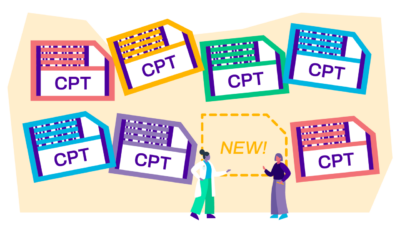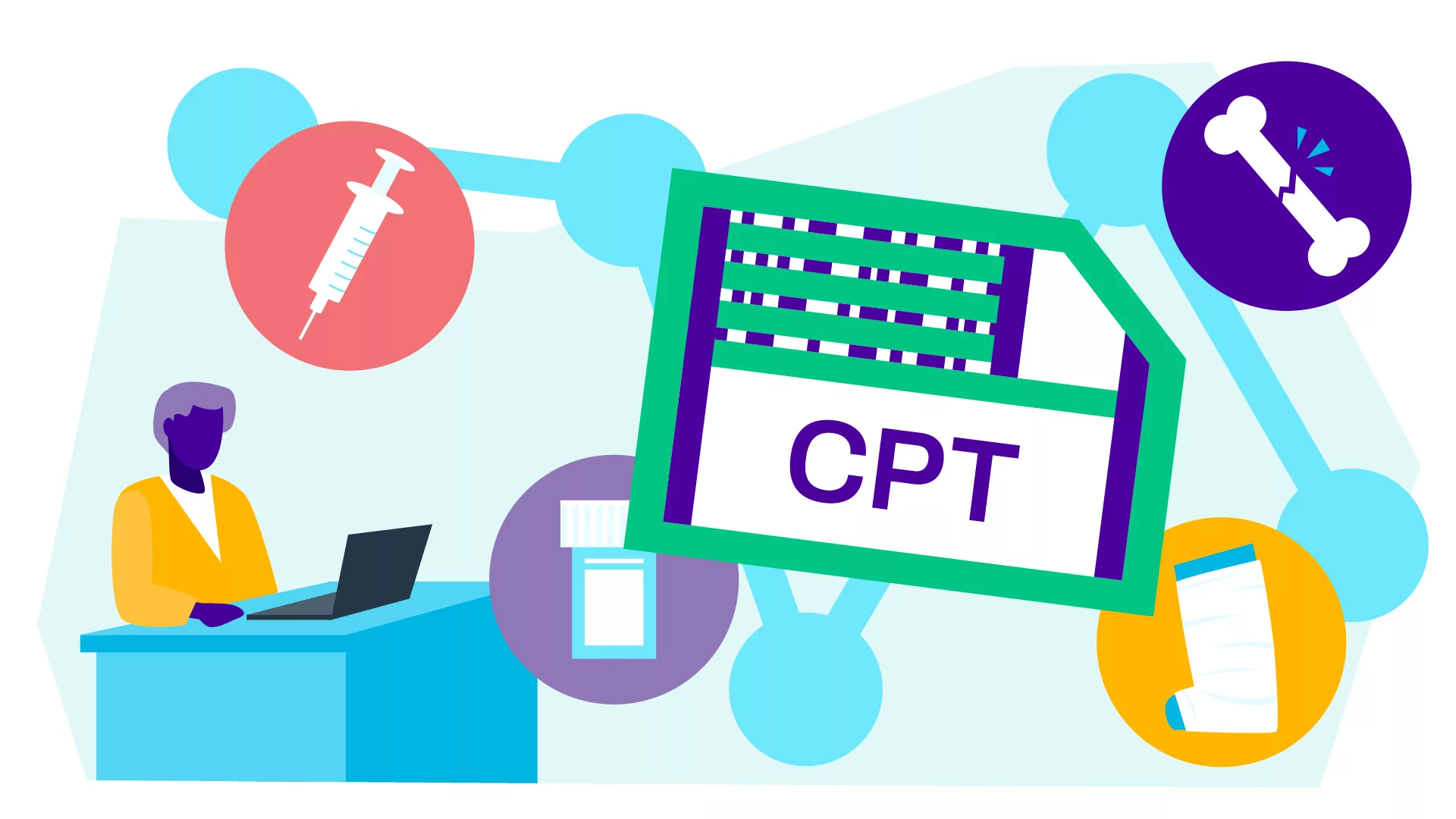CPT CODES
What are CPT Codes?
Current Procedural Terminology Codes (CPT Codes) are the standard for how United States medical professionals such as physicians and healthcare providers, including medical facilities, insurance companies, and other accreditation groups, report and document medical, surgical, anesthesiology, laboratory, radiology, evaluation and management services.
Common Procedural Technology (CPT codes) are numbers assigned to every task and service a medical practitioner may provide to a patient including medical, surgical, and diagnostic services. They are used by insurers to determine the amount of reimbursement that a practitioner will receive by an insurer for that service. Since everyone uses the same codes to mean the same thing, they ensure uniformity.
The more than 7,000 five-character CPT Codes are an important part of the billing process. They are used by insurers to aid in determining the amount of reimbursement the physician or healthcare provider will receive for services rendered.
- CPT Codes are copyrighted and maintained by the American Medical Association (AMA). Updated annually, these codes fall into three major categories.
- Category I– The code range is 00100 to 99499. Each five-digit code has a corresponding description of the procedure or service.
- Category II – These are more of alphanumeric tracking codes to describe clinical components in-clinic services or evaluation and management.
- Category III – These provisional codes are for new and emerging technology, used for the collection of data and assessment of new procedures and services.
- CPT Codes and ICD Codes
CPT Codes work in conjunction with ICD Codes. ICD-9-CM is a list of codes that correspond to procedures and diagnoses recorded in concurrence with hospital care in the U.S. ICD-10-M is the system employed by healthcare providers and physicians to code and classify all symptoms diagnoses and procedures recorded in concurrence with hospital care in the U.S.
For example, a patient’s recorded symptoms are represented by the ICD code, and the procedure done for his treatment is represented by the CPT Code. When these are given to the payer or insurance company, a complete picture of the patient’s medical process is presented.
CPT codes are a big help in measuring performance and efficiency as well as tracking important health data. CPT codes help government agencies keep tabs on the value and prevalence of particular procedures whereas hospitals may evaluate the efficiency of divisions and individuals in their facility using Current Procedural Terminology Codes.

CPT Code Categories
* A medical coder is expected to know this information to be able to find the best possible code for the service or procedure.
Category I
Category I is concerning procedures and contemporary medical practices performed across the United States. This category is generally identified with the 5-character CPT Codes that identify a service or procedure sanctioned by the FDA and performed by a physician or healthcare professional. This category is broken down into six sections and they are:
Evaluation and Management (99201-99499) – which includes hospital observation services, office, and other outpatient services, consultations, hospital inpatient services, emergency department, critical care services, nursing facility services, custodial care services and so on.
Anesthesiology (00100–01999; 99100–99150) – which includes procedures of the head, neck, thorax, intrathoracic, spine and spinal column, upper and lower abdomen, obstetrics and more.
Surgery (10000–69990) – which includes general surgery, integumentary system, musculoskeletal system, respiratory system, cardiovascular system, digestive system, urinary system, eye and reproductive, to name a few.
Radiology (70000-79999) –including ultrasound, mammography, bone/joint, oncology, and nuclear medicine.
Pathology and Laboratory (80000–89398) – including organ or disease-oriented panels, drug testing, therapeutic drug assays, evocative/suppression testing, consultations (clinical pathology), urinalysis, transfusion medicine, microbiology and more.
Medicine (90281–99099; 99151–99199; 99500–99607) – including vaccines, toxoids, psychiatry, biofeedback, dialysis, gastroenterology, ophthalmology, special otorhinolaryngologic services, cardiovascular, noninvasive vascular diagnostic studies, pulmonary, allergy and clinical immunology, endocrinology and more.
Category II
Category II pertains to clinical laboratory services. CPT codes for this category consist of secondary tracking codes employed for collecting information regarding the quality of care rendered, and performance measurement. The use of these codes is not mandatory. Breakdown of Category II CPT Codes are:
- Composite Measures (0001F-0015F)
- Patient Management (0500F-0575F)
- Patient History (1000F-1220F)
- Physical Examination (2000F-2050F)
- Diagnostic/Screening Processes or Results (3006F-3573F)
- Therapeutic, Preventive or Other Interventions (4000F-4306F)
- Follow-up or Other Outcomes (5005F-5100F)
- Patient Safety (6005F-6045F)
- Structural Measures (7010F-7025F)
Category III
Category III is reserved for emerging technologies, with CPT codes of 0016T-0207T. These CPT codes are temporary ones to cover developing technologies, procedures, and services. These codes identify services that are not generally performed by physicians and other healthcare professionals, may not be approved by the FDA, and may not have been tested and proven to be effective. CPT codes are aids to researchers to track such technologies and services.

